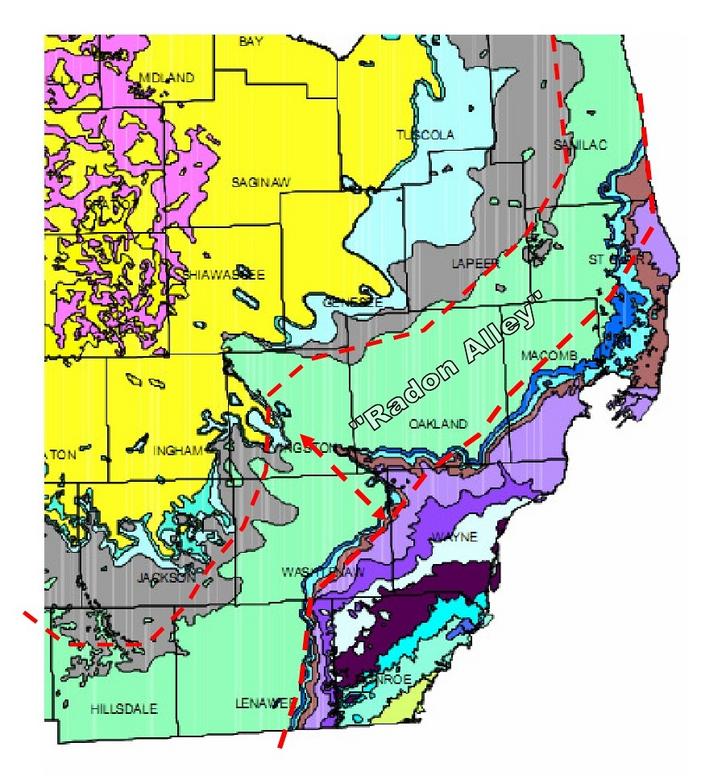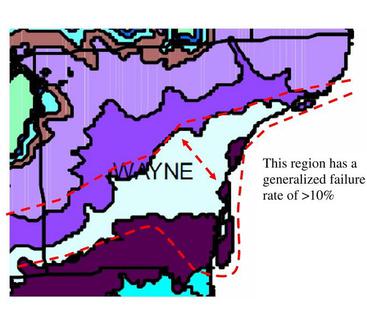Radon
What is Radon Gas?
Radon is a gas that is produced underground by granite bedrock and possibly in lesser amounts by other types of bedrock.
Does Radon Smell?
Radon, is an odorless, colorless and invisible gas.
How does Radon enter a home?
Radon migrates through subsurface groundwater, rock and soil and into basements through cracks, seams, sump pumps and concrete/block pores.
Does Radon Cause Cancer?
Radon gas decays into daughter dust products such as lead and polonium that can be inhaled. The decay of these radioactive byproducts release ionizing radiation, which can cause lung cancer.
Radon Risk In Southeast Michigan
The highest range of radon risk in southeast Michigan generally correlates with an arc-shaped geologic formation (light green) extending from Port Huron and continuing west to southwest through Romeo, north Pontiac, Novi, Brighton, Ann Arbor and continuing down through the Hillsdale region. However, the unpredictable combination of various subsurface factors and building conditions can result in elevated levels of Radon anywhere in Michigan.

The following areas were ranked by the American Lung Association as the top radon hazard locations (with a sufficient testing sample size):
1. Dexter
2. Saline
3. Whitmore Lake
4. South Lyon
5. Washington Township/Romeo
6. Milford/New Hudson
7. Brighton
8. Clarkston
9. Oxford
10. Bloomfield Township
There is a secondary corridor of elevated radon risk located in the Downriver area :

Based on my own testing experience, 6% of homes tested in the Detroit area that were installed with a passive radon ventilation system failed the initial screening test for validating performance of venting system.
According to American Lung Association data, the following is an example of the radon test fail rates for selected municipalities:
- Allen Park 32%
- Ann Arbor 44%
- Bloomfield Hills 32%
- Brighton 64%
- Flint 27%
- Howell 25%
- Northville 30%
- Novi 28%
- Pontiac 22%
- Rochester Hills 27%
- Romeo 52%
- Saline 60%
- St. Clair 20%
- Wixom 52%
Testing Options
Typically a 48-96 hour test is conducted in the basement. This basic test is suitable for many homes. For high risk areas or to confirm results of a short-term test, longer periods of testing are recommended with electronic monitors. Test periods for electronic monitoring are a minimum of one week.
Radon testing is required for licensed child care in private homes. Learn more.
Radon does not pose any immediate respiratory symptoms after exposure. If you experiencing respiratory problems, consider having your home checked for mold. Also consider other indoor air quality contaminants that could be causing a problem.
Need Radon Testing? Visit our Radon Testing Page.
